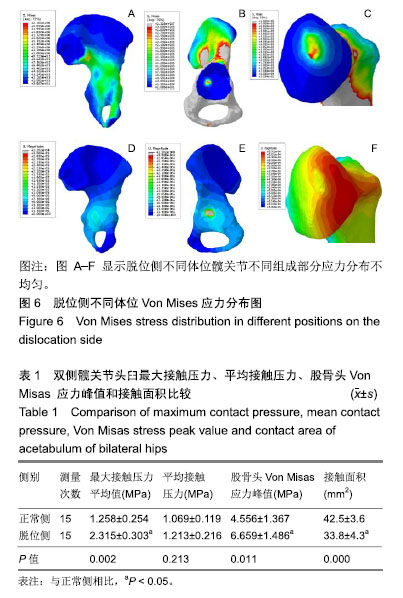| [1]Herring JA. Developmental displysia of the hip. In: Tachdjian’s Pediatric Orthopaedics, 3rd ed. 2002:513-517.[2]Tiruveedhula M, Reading IC, Clarke NM. Failed Pavlik harness treatment for DDH as a risk factor for avascular necrosis. J Pediatr Orthop. 2015;35(2):140-143.[3]Madhu TS, Akula M, Scott BW, et al. Treatment of developmental dislocation of hip: does changing the hip abduction angle in the hip spica affect the rate of avascular necrosis of the femoral head? J Pediatr Orthop B. 2013;22(3):184-188. [4]Kaku N, Tsumura H, Taira H, et al. Biomechanieal study of load transfer of the pubicramus due to pelvic inclination after hip joint surgery using a three-dimensional finite element model. J Orthop Sci. 2004;9(3):264-269.[5]吉士俊,马瑞雪.小儿骸关节外科[M].北京:人民卫生出版社,2005。[6]Andrew DS, Markus O. Physiologically based boundary conditions in finite element modeling. J Biomech. 2006;11:443-451.[7]Leetun DT, Ireland ML, Willson JD, et al. Core stability measures as risk factors for lower extremity injury in athletes. Med Sci Spons Exerc. 2004;36(6):926-934.[8]李永胜,陈维毅.单羽状骨骼肌平面模型的修正及骨骼肌收缩的有限元模拟[D].太原:太原理工大学,2006:1-70.[9]Aagaard P, Magnusson PS, Larsson B, et al. Mechancial muscle function morphology and fiber type in lifelong trained elderly. Med Sci Sports Exere. 2007;39(11):1989-1996.[10]吴健,王兵,姚力.Zweymüller双锥面螺旋髋臼假体修复成人发育性髋关节发育不良[J].中国组织工程研究,2015,18(39):6274-6280.[11]Murray T, Cooperman DR, Thompson GH, et al. Closed reduction for treatment of developmental dysplasia of the hip in children. Am J Orthop (Belle Mead NJ). 2007;36(2):82-84.[12]Viere RG, Birch JG, Herring JA. Use of the Pavlik harness in congenital dislocation of the hip: an analysis of failures of treatment. J Bone Joint Surg Am. 1990;72(2): 238-244.[13]Brekdrmns WA, Poort HW, Sloof TJ, el al. Acta Orthop Scand. 1972; 43(5):301-317.[14]Gareia JM, Doblare M, Scral B, et al. The three-dimensional finite element analysis of several internal an d external pelvis fixations. J Biomech Eng. 2000;122:516-522.[15]Shefelbine SJ, Carter DR. Mechanobiological predictions of growth front morphology in developmental hip dysplasia.J Othop Res.2004; 22(2):346-352.[16]阿良,吉士俊,范慈方.有限元分析先天性髋关节半脱位及髋臼发育不良的应力变化[J].中华小儿外科杂志,2000,21(6):328-330.[17]范清,张菁.有限元分析与髋关节研究进展[J].国际骨科学杂志,2007, 28(1):47-51.[18]李长有,王禹祥,范广宇.髋臼发育不良性髋关节的三维有限元非线性接触压力分析[J].医用生物力学,2005,20(1):18-24. |



